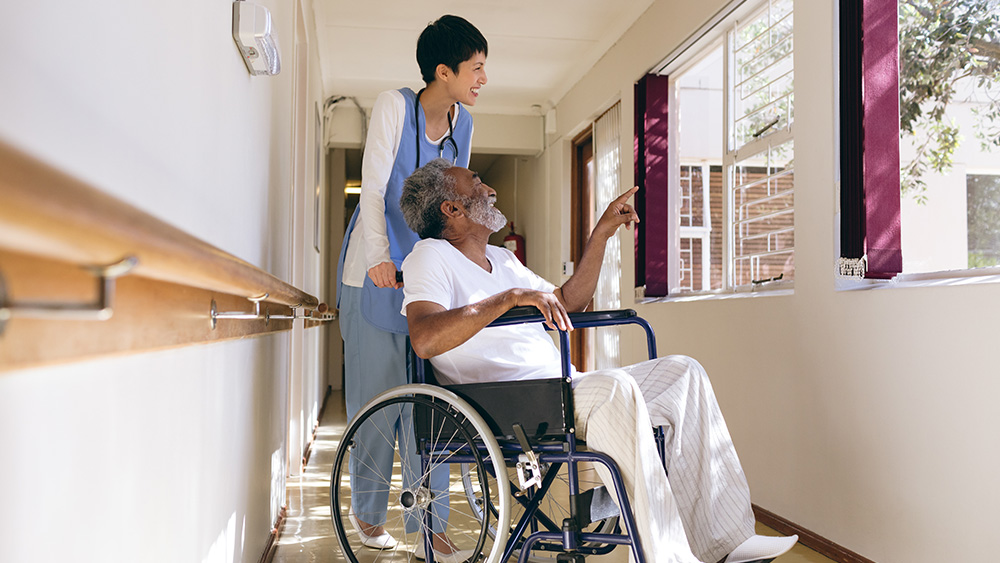
Skilled nursing facilities that frequently tested staff for COVID-19 were able to prevent more infections and deaths than facilities with less testing, an NIH-supported study found.

Skilled nursing facilities that frequently tested staff for COVID-19 were able to prevent more infections and deaths than facilities with less testing, an NIH-supported study found.
What you need to know
People living in skilled nursing facilities are at a higher risk of dying from COVID-19. A skilled nursing facility is a facility with the staff and equipment to give skilled nursing or rehabilitation services and other therapies.
Although less than 2% of the U.S. population either lives or works in such facilities, they accounted for more than 20% of the deaths from COVID-19 through 2021.
One approach to protecting residents of skilled nursing facilities is to frequently test the staff members for COVID-19. But it was unknown how well the strategy worked.
In a study supported by the National Institute on Aging (NIA), researchers looked at data collected during the COVID-19 pandemic. They found that before vaccines were widely available, facilities that did the most testing had fewer COVID-19 cases and deaths among residents than facilities that did the least testing.
What did the researchers do?
Using data from more than 13,000 skilled nursing facilities in the United States, the researchers looked at rates of testing and compared them to infection and death rates. They examined data from three time periods:
-
Before COVID-19 vaccines were available (November 22, 2020, to January 17, 2021)
-
After vaccines were widely distributed, but before the spread of the Omicron viral variant (January 18 to October 31, 2021)
-
During the spread of the Omicron variant (November 1, 2021, to March 20, 2022)
The researchers found that facilities that did the most testing identified about 15% more infections among staff than facilities that did the least testing. Over the whole study period, the facilities that did more testing also had fewer infections and deaths among residents. The findings suggest that frequent testing helped to identify infections among staff members who did not have symptoms, allowing nursing facilities to better limit the spread of COVID-19.
During the Omicron wave, facilities with frequent testing still had fewer cases of COVID-19 among residents. However, the death rates were no longer different from those in facilities with less-frequent testing.
Why is this research important?
The study shows that frequent COVID-19 testing is an effective way to prevent outbreaks in skilled nursing facilities.
Where can I go to learn more?
Frequent Testing Reduced COVID-19 Deaths in Nursing Facilities
-
NIH shares research on COVID-19 testing in nursing facilities.
Infection Control Guidance for Health Care Personnel
-
The Centers for Disease Control and Prevention provides recommendations for preventing COVID-19 infection in health care facilities, including nursing homes.
How COVID-19 Affects Nursing Homes and People With Dementia
-
A research initiative supported by NIA is working to understand the impact of COVID-19 on people who live in nursing homes and people who have Alzheimer’s disease and related dementias.
Sources
Centers for Medicare & Medicaid Services. Glossary: Skilled Nursing Facility. Retrieved May 15, 2023, from https://www.cms.gov/glossary?term=skilled+nursing+facility&items_per_page=10&viewmode=grid
McGarry, B. E., Gandhi, A. D., & Barnett, M. L. (2023). COVID-19 surveillance testing and resident outcomes in nursing homes. New England Journal of Medicine, 388(12), 1101–1110. https://doi.org/10.1056/NEJMoa2210063

News and Stories
Read stories about the efforts underway to prevent, detect, and treat COVID-19 and its effects on our health.
 An official website of the United States government
An official website of the United States government

